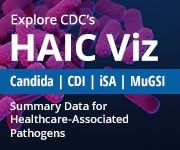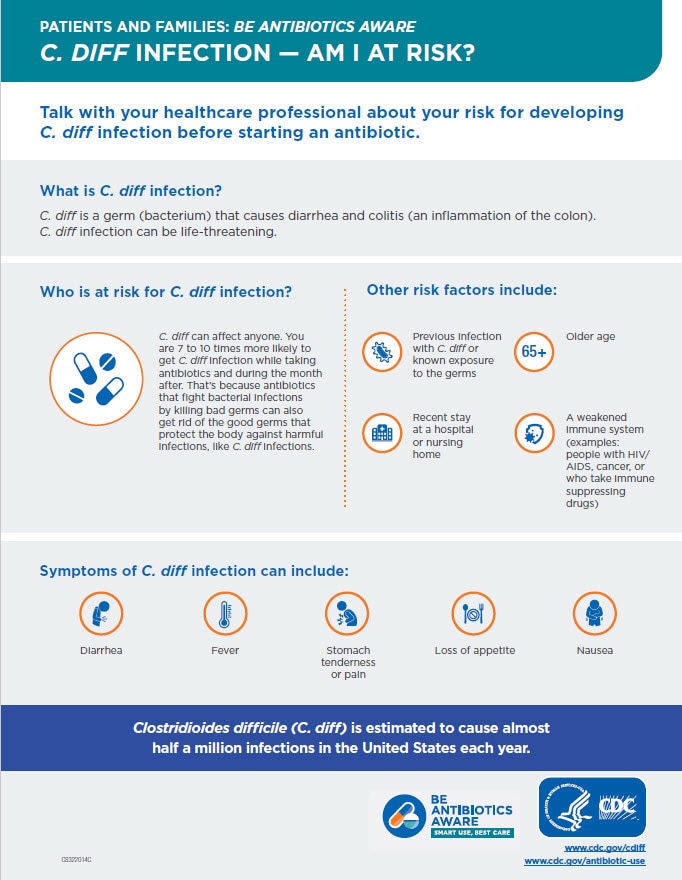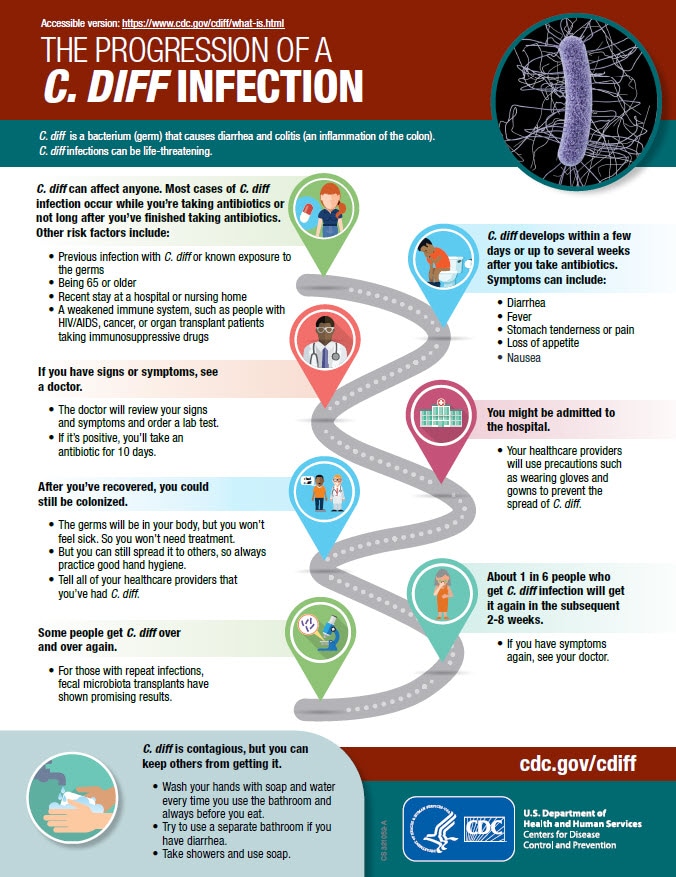What CDC is Doing to Reduce C. diff Infections
CDC is working with the Centers for Medicare and Medicaid Services (CMS) and other federal partners to reduce C. diff infections.
To reach our goal of reducing C. diff infections, CDC is:
- Continuing to promote CDC’s guidelines for infection control and working with partners to facilitate implementation. (See the Infection Control Guideline Library).
- Supporting prevention collaboratives and prevention programs in states with high C. diff infection rates.
- Working with healthcare facilities to identify and address barriers for C. diff infection prevention.
- Expanding implementation of antibiotic stewardship programs in all healthcare settings, including dental offices and outpatient settings, and focusing on specific antibiotics linked to C. diff infections.
- Using innovation to address critical questions such as the role of asymptomatic carriers, transmission dynamics, the patient’s microbiome, and environmental cleaning.
C. diff infections are an urgent problem in hospitals, nursing homes, and in communities. C. diff infections can spread more widely when patients move between these healthcare facilities, both within and between communities.
With our public health partners, we are:
- Tracking and reporting national progress toward preventing C. diff infections in many types of healthcare facilities. These programs help track the size of the problem, antibiotics used, and people at risk. The National and State Healthcare-Associated Infections Progress Report provides a summary of select HAIs, including C. diff, across four healthcare settings.
- Promoting C. diff prevention programs and providing gold-standard patient safety recommendations.
- Providing prevention expertise, as well as outbreak and laboratory support to health departments and facilities.

These CDC programs help track the size of the problem, antibiotics used in treating the infection, and people with C. diff infections.
- Healthcare-Associated Infections – Community Interface (HAIC)
- C. diff Infection Tracking – measures the burden of C. diff infections in the population and monitors trends in disease over time.
- Trends in U.S. Burden of Clostridioides difficile Infection and Outcomes
- National Healthcare Safety Network (NHSN)
- All healthcare facilities participating in the Centers for Medicare and Medicaid Services (CMS) Hospital Inpatient Quality Reporting Program have been reporting C. diff infection data to NHSN since 2013.
- Healthcare-Associated Infection Data Reports
CDC works with networks of trusted partners to discover, implement, and evaluate innovative ways to improve healthcare quality and patient safety.
One example is CDC’s investment in projects expanding our understanding of the relationship between antibiotics and the microbiome. Antibiotics can disrupt (unbalance) your microbiome, a community of naturally occurring germs in and on our bodies.
Understanding how the microbiome and infections are connected is the next frontier in protecting the public’s health. Together with researchers, CDC is answering:
- How do antibiotics disrupt a healthy microbiome?
- How does a disrupted microbiome put us at risk?
- How can tailoring antibiotic use protect the microbiome?
CDC-Supported Prevention and Research
- Epidemiology and Laboratory Capacity for Infectious Diseases (ELC) helps state, local and territorial health departments battle infectious disease threats.
- In the Prevention Epicenters Program, CDC partners with academic investigators to conduct innovative infection control and prevention research.
- The Targeted Assessment for Prevention (TAP) Strategy helps prevent healthcare-associated infections by setting priorities, providing an assessment tool, and implementation guides.
- CDC’s Emerging Infections Programs (EIP) is a network of state health departments and collaborators tracking infections, including C. diff, in many areas.
- The Broad Agency Announcement (BAA) funds projects that implement new ways to prevent antibiotic-resistant infections and their spread.
Federal Initiatives
- The National Action Plan to Prevent Health Care-Associated Infections provides a road map for preventing HAIs in acute care hospitals, ambulatory surgical centers, end-stage renal disease facilities, and long-term care facilities, and for implementing antibiotic stewardship efforts as a means of HAI prevention.
- The Healthcare Cost and Utilization Project from the Agency for Healthcare Research and Quality (AHRQ) is a family of databases, software tools and related products developed through a Federal-State-Industry partnership.
Academic and Professional Partners
- Infectious Diseases Society of America (IDSA)
- Society for Healthcare Epidemiology of American (SHEA)
- Council of State and Territorial Epidemiologists (CSTE)
- Association of State and Territorial Health Officials (ASTHO)
- Council for Outbreak Response: Healthcare-Associated infections and Antimicrobial-Resistant Pathogens

